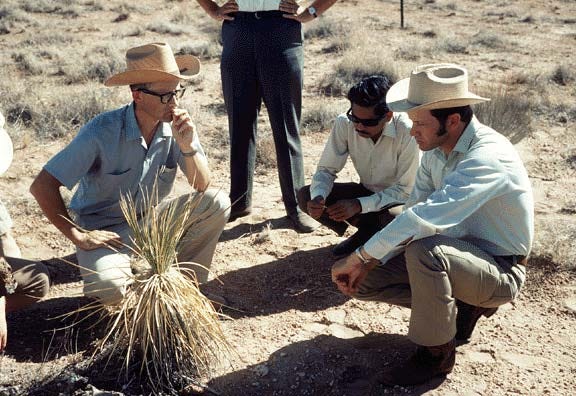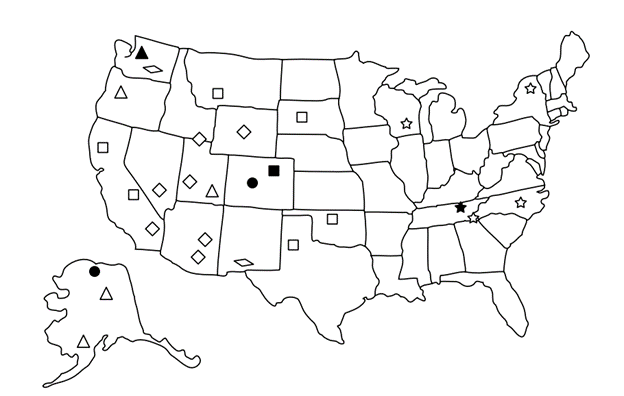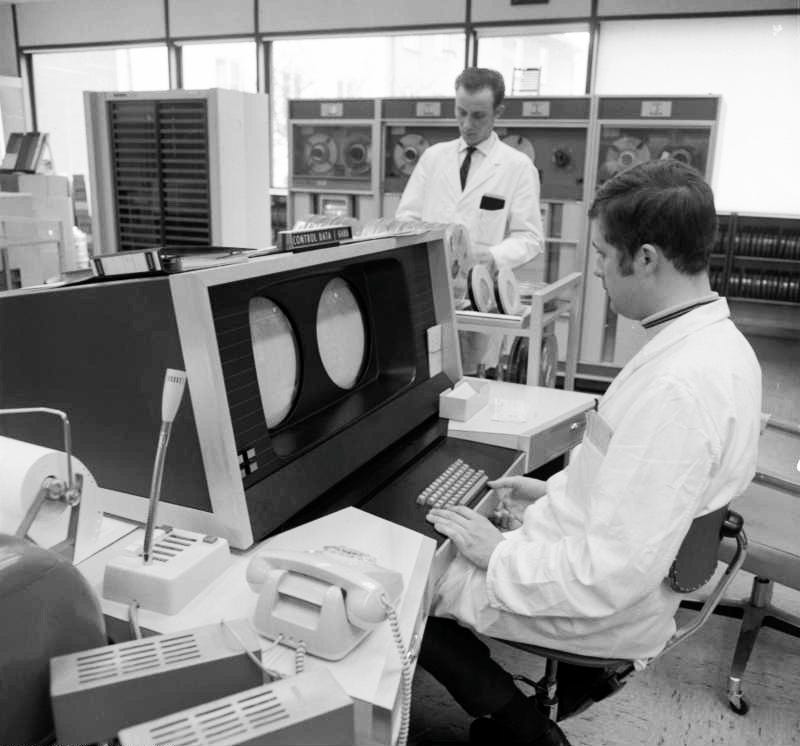Hello Interactors,
This week I’m coming to you from Cape Cod. Yesterday we saw “red tide” algal plumes stretching a quarter of a mile along a flat sandy beach against a receding tide. This is a common occurrence in Massachusetts, but the frequency of occurrences of “red tide” are increasing worldwide. The last couple weeks have seen extreme weather events in unsuspecting places worrying even the most conservative climate scientists. Perhaps it’s time we put less attention on the drama of the consequences of climate change and more on educating the public on the science behind it.
As interactors, you’re special individuals self-selected to be a part of an evolutionary journey. You’re also members of an attentive community so I welcome your participation.
Please leave your comments below or email me directly.
Now let’s go…
CSU AND TENNEESEE TOO
Our family is on a trip visiting family on the east coast – and also few colleges for two rising seniors. I never visited my first college, Colorado State University (CSU) in Fort Collins, Colorado. I was mostly following a friend who, like I, wanted to study graphic design. CSU had a notable program, but it was mostly known as an agricultural school. It’s closer to the state of Wyoming than it is Denver and is flat with rolling plains of grassland that spread out below the foothills of the Rocky Mountains – cow country. A fact that becomes obvious when the wind blows from the east carrying the stench of livestock fields in neighboring Greely, Colorado.
I had no idea Colorado State was also home to an international ecosystem research center, the National Resource Ecology Laboratory (NREL). Ecology was not a new thing, but most ecological research was conducted by researchers in isolation of one another. This program, however, aimed to bring different disciplines together – like ecology, soil science, and climatology – to study their mutual effects on each other. This program was nearly as old as I was when I showed up there as a wide-eyed eighteen year old Iowa boy.
Initial plans for this lab were formed in 1966 with initial seed funding coming from the Ford Foundation and then the National Science Foundation (NSF) soon after. It was run by one of the most influential and gregarious pioneers in the field of systems ecology, George Van Dyne. Systems ecology is a quantitative approach to studying, integrating, and synthesizing entire ecosystems made of living (biotic) and non-living (abiotic) components. And Fort Collins was the first U.S. site of a larger International Biological Program dedicated to exploring and combining big science and ecosystem ecology.

Van Dyne grew up in south eastern Colorado as a true cowboy working the ranch by horseback. He satisfied his love and curiosity of western land and animals by studying animal science at CSU as an undergrad and range science for his masters degree from South Dakota State University. Continuing his focus on total ecological systems, he went on to earn a PhD at the University of California, Davis developing mathematical models of ecological data.
After completing his PhD in 1963 there were few places in the world with the necessary computing power to crunch George’s differential equations that weaved a varied matrix of ecological variables. So he headed to Oak Ridge Tennessee to join the Oak Ridge National Laboratory (ORNL); home to one of the country’s largest mainframe computer centers at the time.
Van Dyne joined two professors at nearby University of Tennessee, Knoxville who had created the first systems ecology course in the United States. He would go on to author four papers a month, double the expected rate of a research scientist, all while enthusiastically teaching. In one noontime course he could be seen
“writing on the chalkboard with his right hand, eating a sandwich with the left, and talking in his soft, intense baritone voice about many exciting developments in ecosystem modeling.”1
Many of Van Dyne’s over 120 refereed papers were written during his eighteen months in Tennessee.
MAINFRAME MATHEMATICAL MODELLING
Van Dyne’s work at Oak Ridge was on a nearby grassland, and the expertise he garnered analyzing the data led him to edit a seminal 1969 book entitled The Ecosystem Concept in Natural Resource Management. It was his love of the grasslands and his knowledge of the quantitative study of systems ecology that led him to run the National Resource Ecology Lab in Fort Collins focused on the west’s Grassland Biome – lands dominated by grasses. There he would assemble and analyze data coming in from grassland sites strewn across a rectangular block west from Oklahoma to California north to Washington and back east to South Dakota.

Each site had researchers in the field estimating plant biomass from pre-determined and equivalent plot sizes. They all used the same statistical methods in attempts to maintain similar sample sizes across sites. The IBP program goals were to collect and estimate averages within 20 percent with 80 percent accuracy by leveraging models created by mathematicians and teams of postdoc researchers from a variety of backgrounds.
Van Dyne and team were interested in the role abiotic factors play in the ecological health of grasslands. The model included over 180 internal state variables. For example, the number of herbivores or amount of organic minerals found in the sample sites. The model also included abiotic driving variables like rainfall or processes stemming from photosynthesis like radiation. Their work culminated in 4400 lines of computer code that included 500 parameters. It took seven minutes to compile and run a program that simulated two years of effects of grassland under the modelled conditions on a state of the art mainframe computer from the Computer Data Corporation, the CDC 6400. The follow-on to this model was the CDC 6500 which cost $8 million in 1967 – or over $63 billion in 2021 dollars – and weighed over 10,000 pounds. This same mathematical model would run almost instantaneously on a ordinary laptop today.

In hindsight, the model is considered overly complex but it did satisfy the goals Van Dyne set out to achieve;
“to create a model that would serve as a communications device and organizer of information, be useful as a research tool, and yield results that could help in elucidating biological phenomena in grassland ecosystems.”
There were four basic questions the model was intended to address:
What is the effect on net or gross primary production as the result of various abiotic disturbances?
How is the carrying capacity of a grassland affected by these disturbances?
Are the results of a simulation model like this consistent with field data taken in the Grassland Biome Program, and if not, why?
What are the changes in the composition of the producers as a result of these disturbances?
The model didn’t prove to be robust enough to be a reliable predictor of the future, but it did succeed in demonstrating a systems approach to modelling an ecosystem.

This was a highly controversial endeavor that was seen by many conservative practicing biologists and ecologists as obtusely abstract, misguided, expensive – and competitive. They witnessed large amounts of NSF money going toward Van Dyne’s ‘grand experiment’ and they began to worry their own individual research would dry up.
Traditional ecological research had been a solitary endeavor and many of the older practicing scientists preferred the more conservative individualistic approach to science. Meanwhile, the younger liberal scientists were encouraged by the more open and collaborative approach of systems ecology Van Dyne encouraged. They preferred the teamwork required in collecting, analyzing, and publishing what was shared among a diverse array of contributors. It was a split in belief and approach that mimicked the cultural attitudes of the sixties and seventies.2
As a result, established scientists began speaking out and became critical of the big science approach to ecological systems research – and Van Dyne’s program in particular. They questioned the quality of data collected across so many sites by a variety of scientists of differing backgrounds and were dubious of the aggregation of data needed to conform to the models Van Dyne and his team of mathematicians had devised.
Van Dyne did not give in easily, however, and by 1972 he had hired teams of ‘integrators’ to work with site directors and scientists to synthesize the large amounts of data in preparation for analysis. One of the original integrators and organizers was Jim Ellis. He was second only to Van Dyne in his understanding of the interaction of ecological processes with human societies. By encouraging standard methods of defining variables and measuring outcomes, the work these people did is considered by some to be some of the first examples of organized software quality assurance.
By 1974, Van Dyne had amassed a team of over fifty researchers and integrators. By then, however, the NSF had been swayed by the critics and they seized funding the Grassland Biome Program. But some of this undoing was Van Dyne’s own making. While he was a dedicated scientist who gave much of his time to young scientists, he also created a confrontational work environment inviting competing opinions and relished in fostering heated debates. He also had a notorious top-down management style and many of the younger scientists chose to move to other projects than continue working in such an environment.(1)
A MAN OF ACTION AND A CALL TO ACTION
The roughly seven years of the IBP Grassland Biome Program was fast, inventive, and impactful producing mounds of scientific papers. The computer model the team devised was never able to answer the grassland questions they had hoped, but it marked a special point in ecological systems research and sparked the development of future ecological simulation modeling and research programs. Including centers at the University of Georgia, Colorado State University, Utah State University, San Diego State University, and Oregon State University. Ecological simulation models, and research programs, have improved over time and are now considered an essential part of ecological science. Any multi-variate questions being asked through today’s planetary ecological simulation models would likely not be possible without George Van Dyne and the IBP.
Large scale, heavily funded ecological programs like the one Van Dyne choreographed do not exist today. Big science attention and dollars tend toward the human genome project, astronomy, interplanetary exploration, and biochemistry. And members of the mainstream media don’t help. They’d rather report on Bezos, Branson, and Musk comparing the size of their rockets and how far they can reach into the stillness of space. Not to take anything away from the innovations that have stemmed from the infusion of private money into the amazing advancements in modern-day rocket wizardry, but all three seem to have given up on planet earth. Perhaps the advertising industry and the mass media consuming public have too.
But ecological systems scientists have not given up. Programs like the Long Term Ecological Research Network (LTER) employ nearly 2000 scientists across 28 U.S. sites and includes an international component. Started in 1980, this program is funded by the NSF and data from their research can be found through the Environmental Data Initiative and DataONE. There’s also a program operated by Battelle called the National Ecological Observatory Network (NEON). Also funded by the NSF, this program was conceived in 1999 and has been fully operational since 2019. Their mission is to “advance the ability of scientists to examine and understand the interactions between life and the environment at the scale of an entire continent.” Just like George Van Dyne, they seek to quantify ecological processes over time across large spatial extents through complex sampling across space and time.
And the National Resource Ecology Laboratory (NREL) continues to function today out of Colorado State University in Fort Collins; as does the Fort Collins Science Center (FORT) as part of the United States Geological Society (USGS). They “develop and disseminate research-based information and tools needed to understand the nation’s biological resources in support of effective decision making.” My friend and former college roommate, Pat Shafroth, is a Research Ecologist there and was instrumental in studying the impact on riverside vegetation upon the destruction of the Elwha Dam, the opening of the Elwha River, and the return of spawning salmon.
George Van Dyne was ahead of his time. His intuition to first study abiotic factors like rising water temperatures come into focus in light of this summer’s climate catastrophes. We no longer need simulations to tell us the Sacramento River is “facing a “near-complete loss” of young salmon, which cannot grow beyond their egg stage in waters heated by extended temperatures of over 100 degrees.” Abiotic perturbances from a warming planet have clearly effected the life of the living.
Flooding is another abiotic perturbance that impacts the lives of living creatures across a large geographic area over a short period of time. The grieving families of the 122 Belgian and German lives that were lost in the flooding this week no longer need a mathematical model to warn them of the dire consequences of human-induced climate catastrophes. And that says nothing of the nonhuman lives taken by the insufferable rushing water.
But dwelling on despair only breeds despair. If there’s one thing ecological systems scientists like George, and even my friend Pat, have taught us is that making one small change in a network of interdependent ecological variables can have a large scale impact. We just need to know where to make the change.
Scientists know where to focus, but we need big government to act on the big investments they’ve made in big science and big ecology to enable big changes. Collective individual behavioral at the tips of fractal like ecosystem networks helps, but even if everyone on the planet did their part to reduce CO2 emissions, it’s still only four percent of total emissions. We need governments to enact legislation that gets us to clean energy policies quickly – small changes, further up the fractal chain that have big cascading impact through the network of life.
So if you want to do your part to help, go to call4climate.com or dial 202-318-1885. Just punch in your zip code and you’ll be presented with the necessary talking points and then connected to your representative Senate offices. Do like George Van Dyne and take action.












